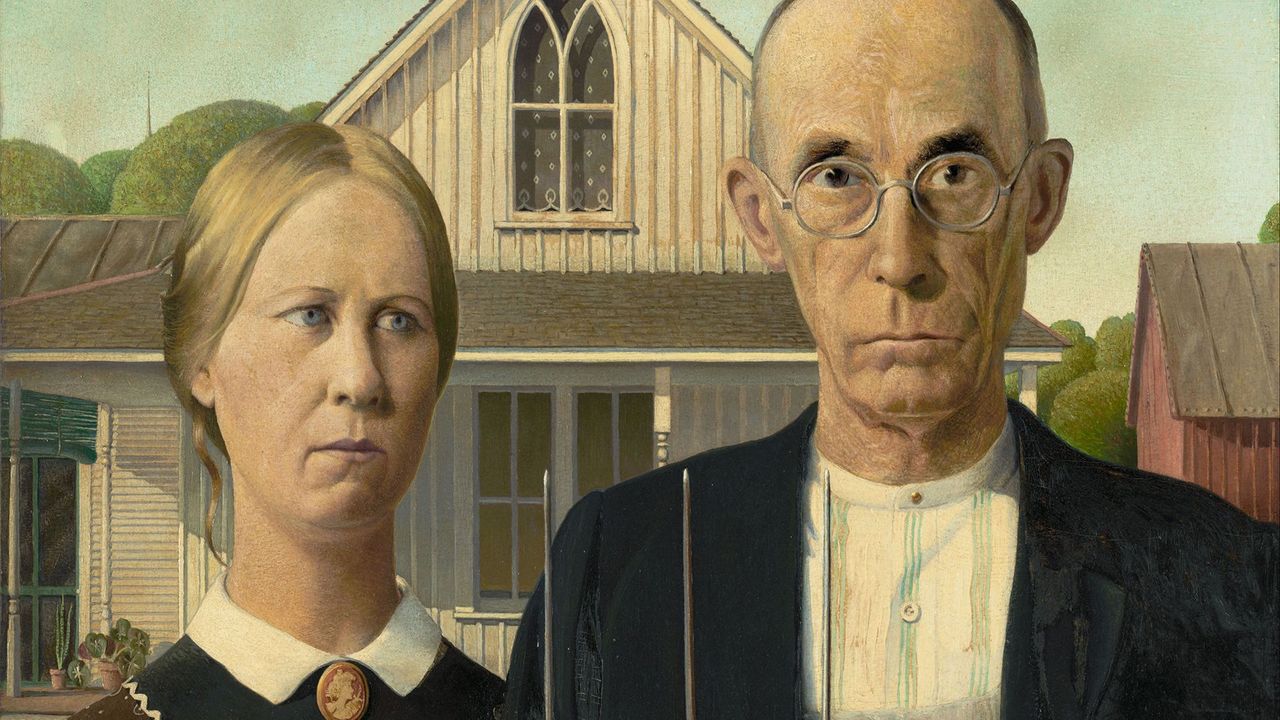
Robert Draws – American Gothic is one of the most iconic and enigmatic paintings in American art history. Created by Grant Wood in 1930, this artwork has sparked decades of interpretation, parody, and cultural commentary. At first glance, it appears simple—a stern-looking man and woman standing in front of a modest farmhouse. But this seemingly quiet portrait holds a deeper meaning that continues to resonate nearly a century later.
The painting is not just a representation of two individuals; it’s a symbol of resilience, tradition, and the American spirit during times of hardship. In a single frame, Grant Wood captured an entire era’s mood—an America grappling with change, struggling through economic depression, yet holding firmly onto its values.
Grant Wood, a Midwestern artist from Iowa, sought to portray the strength and character of rural America. Unlike the glamorous or abstract art trends emerging in urban centers, Wood focused on what he knew: simple lives, hard work, and conservative values.
He used his sister, Nan Wood Graham, and his dentist, Dr. Byron McKeeby, as models—not as a couple, as many assume, but as a daughter and her father. Their serious expressions, stiff posture, and formal clothing reflect a kind of moral uprightness. Wood wanted to create something that honored the people of the Midwest, even if it appeared exaggerated or overly solemn.
This seriousness was not meant to be mocked. Instead, it underscored the quiet dignity of people who persevered during difficult times.
“Read about: The Arnolfini Portrait: A Glimpse into 15th Century Flanders”
Although Wood painted American Gothic before the Great Depression reached its peak, the painting quickly became associated with the struggle of the 1930s. People saw themselves in the figures—ordinary Americans trying to hold their lives together despite economic turmoil.
The stern faces seemed to reflect the collective mood of a nation: wary, cautious, but determined. Their setting—a small wooden house with a distinctive Gothic window—offered no luxury, only honesty. This portrait wasn’t about fantasy or escape; it was about facing reality with a steady gaze.
Because of this, American Gothic was embraced by both critics and the public. It served as a quiet rallying cry for pride in simplicity, a reminder that identity could be found in everyday life.
“Read more: Unveiling the Beauty of The Birth of Venus: Botticelli’s Masterpiece”
Over the decades, American Gothic has been endlessly reinterpreted. Some saw it as satire, mocking the conservative rural lifestyle. Others believed it was a tribute. The ambiguity gave it life—it could be serious or humorous, nostalgic or critical, depending on who looked at it.
Its composition has been parodied in countless ways. Pop culture references range from magazine covers and political cartoons to TV shows and advertising. Yet no matter how many times it has been spoofed, the original painting remains untouchable in its solemn grace.
The man’s pitchfork, the woman’s apron, the house’s Gothic window—these elements have become visual shorthand for American heritage and tradition.
One of the painting’s most striking features is its simplicity. There’s no background clutter, no vivid colors screaming for attention. Everything is muted, restrained, controlled. This visual quietness amplifies its emotional weight.
Wood used sharp lines and deliberate symmetry to draw attention to the figures’ expressions. Their eyes don’t meet ours directly, but they feel present—rooted in their place, in their values, and in their history. Through minimalism, American Gothic says more than many complex paintings could.
This kind of controlled power is what gives the work its timeless impact.
In today’s rapidly changing world, American Gothic still resonates. It speaks to themes that never grow old: identity, tradition, and endurance. In an age where image often overshadows substance, this painting reminds us of quiet strength, of authenticity over performance.
People continue to connect with its message, even if they see it through different lenses. Some find comfort in its familiarity. Others challenge its ideals. But no one ignores it.
That’s the mark of a powerful artwork—it continues to live and breathe, long after the brush has dried.